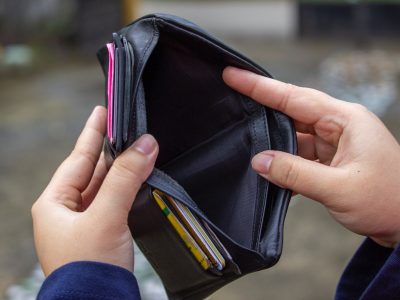We’re still waiting for the final results of this year’s closely-watched presidential election, but one thing has become clear: Americans are fed up with the War on Drugs, a phrase that refers to the government-led initiative to stop illegal drug use. The movement started in the 1970s and gained momentum in the 80s and 90s when the country started increasing prison sentences for drug users and dealers.
However, we’ve come a long way over the last 30 years. In last night’s election, the state of Oregon voted to decriminalize heroin, cocaine, oxycontin and methamphetamine through Measure 110, while five more states voted to legalize recreational marijuana, including New Jersey, Arizona, Montana, and South Dakota. Mississippi, meanwhile, legalized the drug for medicinal purposes. There are now just three states across the country where possession of marijuana is outright illegal under any circumstance.
Advocates see this as a win for those suffering from drug abuse: the law paves the way for addicts to receive counselling and therapy as opposed to jail time, which could dramatically change the way we view addiction in this country.
Changing the Narrative on Drug Abuse
For decades, the U.S. has treated drug use as a criminal offense rather than a health condition or psychiatric concern.
The U.S. has the largest prison system in the world. The American criminal justice system holds almost 2.3 million people in 1,833 state prisons, 110 federal prisons, 1,772 juvenile correctional facilities, 3,134 local jails, 218 immigration detention facilities, and 80 Indian Country jails as well as in military prisons, civil commitment centers, state psychiatric hospitals.
Of those, 1 in 5 incarcerated people are locked up for a drug offense.
Since 1971, the war on drugs has cost the United States an estimated $1 trillion. In 2015 alone, the federal government spent an estimated $9.2 million every day to incarcerate people charged with drug-related offenses, which amounts to more than $3.3 billion annually.
Now that more states are moving to legalize these substances, fewer people will wind up behind bars for using or carrying drugs.
“This is the most significant reform in our nation’s failed drug policies in a generation,” said Kassandra Frederique, the executive director of Drug Policy Alliance. “It’s particularly significant because most people don’t realize that drug possession is the number one arrest in the country.”
It’s also a clear rebuke of the prohibition of marijuana, which isn’t nearly as dangerous as other illegal substances, as well as alcohol and tobacco cigarettes. Experts believe these recent ballot measures could add another $9 billion to the growing marijuana industry.
“It comes down to fact that marijuana prohibition has been an abject failure,” said Matthew Schweich, deputy director of the Marijuana Policy Project. “If you’re not going to punish people harshly for marijuana then you might as well legalize it to control it and regulate and use revenue for important public services.”
The law reduces drug misdemeanor charges to noncriminal offenses, while instituting a $100 fine. It also requires offenders to be screened for drug addiction. For people caught with large quantities of drugs, the penalty has been reduced from a felony charge to a misdemeanor.
Reinvesting in Addiction Treatment
Recreational marijuana has been legal in the state of Oregon since 2015. Over the last five years, officials have collected millions of dollars in tax revenue that will go towards addiction treatment facilities and a state-supervised fund that will pay for drug programs, treatment, and housing.
Increasing access to addiction treatment and counselling is important, but it’s also about removing the stigma of criminalization, which can easily worsen the effects of addiction. Experts say these individuals need access to support programs that help ease the underlying causes of addiction.
Around 19.7 million Americans (aged 12 and older) were struggling with a substance use disorder as of 2017. Of those, 8.5 million American adults suffered from both a mental health disorder and a substance use disorder, or co-occurring disorders.
Experts say drug abuse often comes down to mental health, external influences, and genetics. In fact, genetics, including the impact of one’s environment on gene expression, accounts for about 40% to 60% of a person’s risk of addiction.
Kassandra Frederique says the recent victory should help close the cycle of addiction. “What the Oregon initiative represents is the ability to prioritize giving our loved ones the help, the resources that they need, and shunning criminalization. It removes the barriers to treatment and harm reduction and other health services.”
Drug charges disproportionally affect people of color. The ballot measure specifically addresses issues of racism that can complicate patient outcomes. It’s all about prioritizing treatment over punishment, regardless of the person’s race. The Oregon Academy of Family Physicians, Oregon Nurses Association, and the Oregon chapter of the American College of Physicians all endorsed Measure 110.
The measure was opposed by the Oregon District Attorneys Association and local drug and addiction organizations. Opponents argued the state didn’t have enough beds to care for those suffering from addiction, while others said that offenders will only confront their addiction if they have to answer before the law, but there’s little evidence to back up this claim.
Frederique would like to see other states follow in Oregon’s footsteps by decriminalizing low-level drug offenses. It’s just one part of undoing the damage caused by the War on Drugs.

















